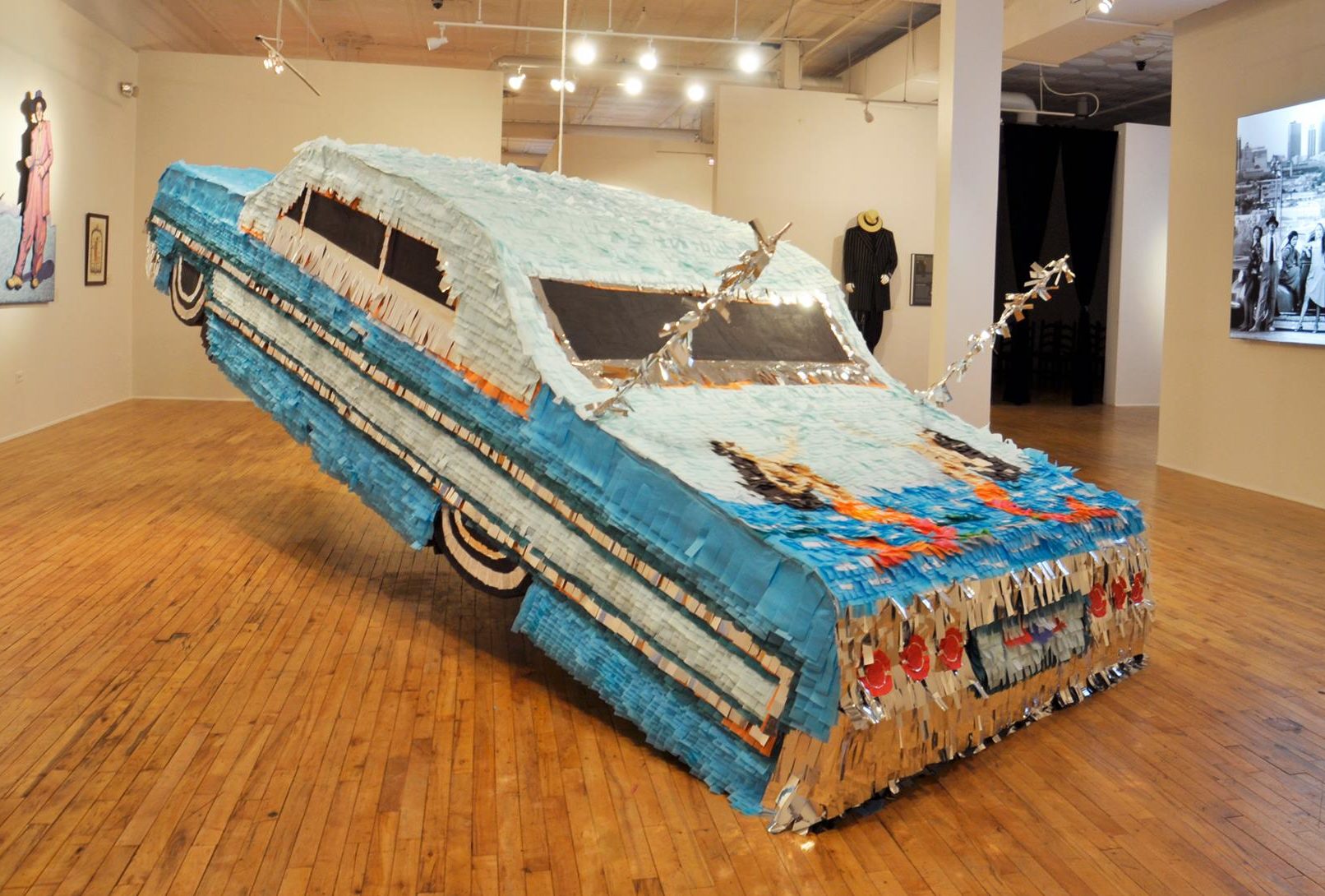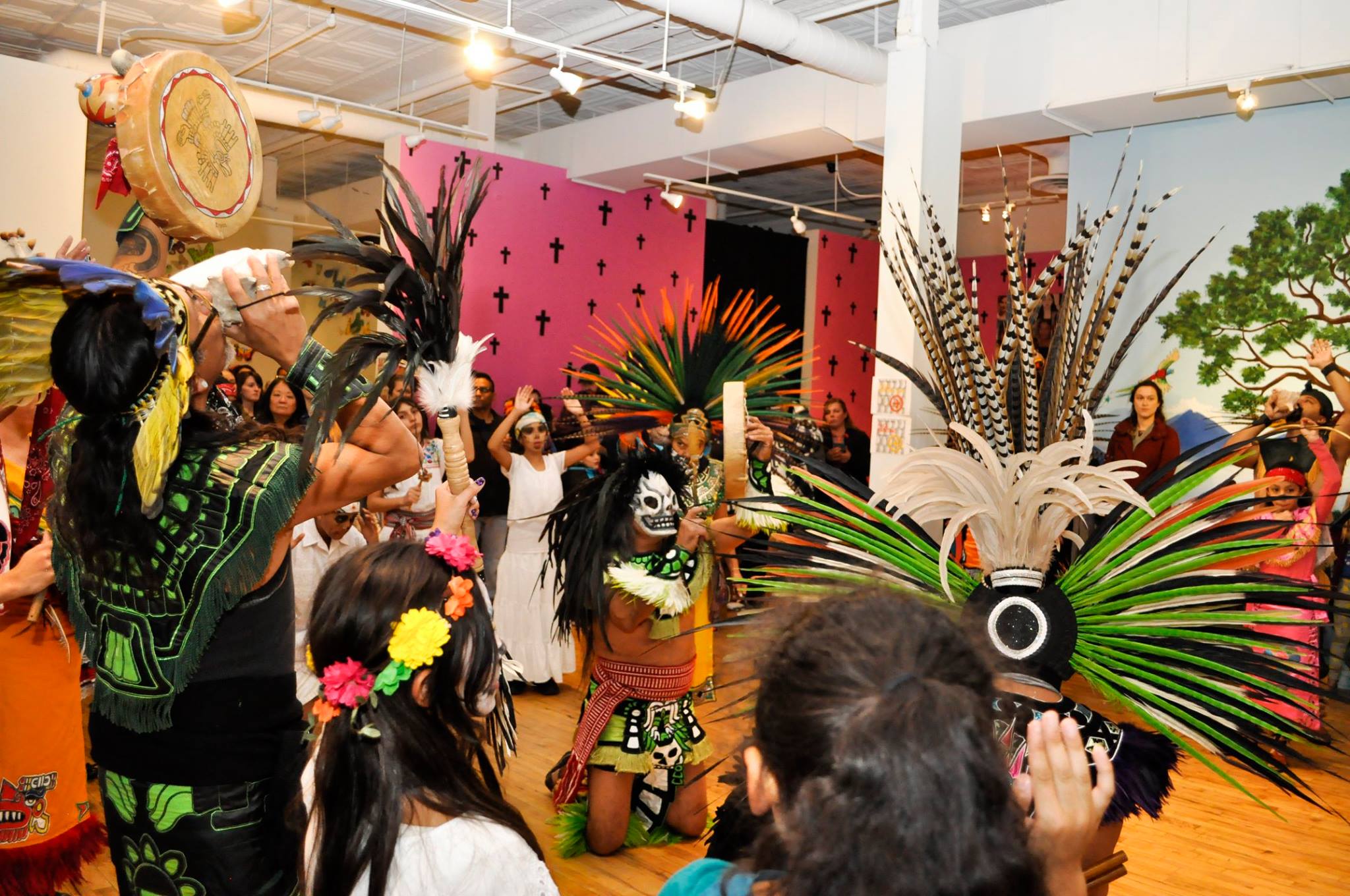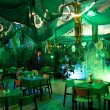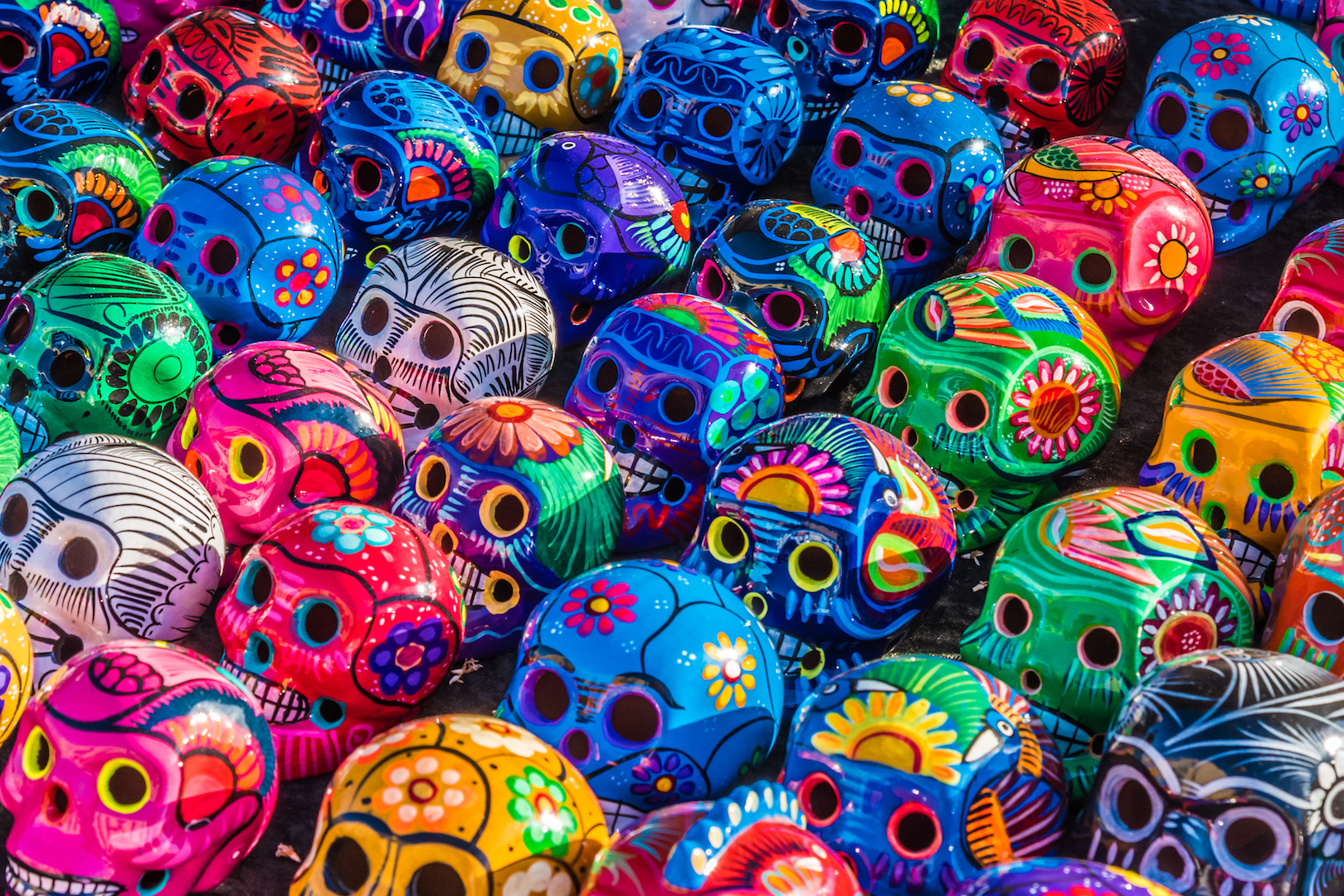The holiday season is flying by with Halloween almost over, but there’s another major holiday starting on October 31 — Día de los Muertos, also known as Day of the Dead. Día de los Muertos celebrates and remembers ancestors and loved ones who have passed to help them through their spiritual journey in the afterlife. Often times, Halloween and Día de los Muertos get intertwined, but Museo De Las Americas aims to separate the two holidays through education and awareness. Museo De Las Americas is a premier Latin American art museum in the Rocky Mountain region — located in the heart of the Santa Fe Arts District — it has been serving the community for over 27 years. Museo De Las Americas has been busy this past month as they prepared for their annual Día de los Muertos celebration, the First Friday Art Walk, on November 2.
303 Magazine had the chance to sit down with Jade Gallegos, Museo De Las Americas public relations and marketing coordinator, to learn more about the institution and Día de los Muertos.

303 Magazine: Why was Museo De Las Americas created?
Jade Gallegos: I think it’s really about representation and preservation. It’s about the histories of the America’s and the indigenous people kind of being, well as it is, colonized and assimilated. So [Museo’s] trying to hold on and preserve the culture that we still have for future generations, and especially art because art specifically is a form of storytelling and helping with that preservation of our culture. And also getting the youth involved and having a creative outlet to expand their minds and be in touch with their roots.
303: Explain how Museo wants to enact change within Denver and beyond.
JG: I think just our awareness, obviously we’re a non-profit, so we have fewer resources and have to make those special connections. We just want to really make ourselves known and aware for this region, as I said there’s a lack of Latin American art museums around the country, and that’s kind of astounding too being where we’re located in the Rocky Mountain region — kind of Southwest, kind of not. It’s surprising there’s not more of us here. Museo finds it really important to expand and make those connections and be that communal space for Latino artists all over.
303: How would you describe Día de los Muertos?
JG: Día de los Muertos is celebrated all over the world now, but it’s a Mexican holiday. It’s interesting because it’s recently gotten really popular and commercialized in America. But of course, it’s spread all around the world because anybody with a Mexican heritage might still celebrate it no matter where they reside or moved. It’s a Mexican holiday that coincides now with All Saints Day, but it’s actually a pre-contact holiday. It was around prior to the Spanish conquest and colonization over Mexico. Today, the purpose of it still remains pretty similar to how it started, which is for families to celebrate their loved ones who passed on. It’s a multi-day event and celebration, so people celebrate it where one day is dedicated to the souls of children who have passed then to elders who have passed and ancestors of those who they didn’t know but pay homage to. It’s about creating a journey and calling to their ancestors from the afterlife to bring their spirits into the home just for this holiday — kind of a reunion of spirits and energies.

303: What is your favorite memory from your own past Día de los Muertos celebrations?
JG: I actually don’t celebrate it, but this is a really, really great and well-timed question. I’m Native American and Mexican American. With the popularization and prominence of it in America, my family specifically was saying we should actually celebrate it this year. The reason being is a lot of people of color [POC] communities would say family is so important and close-knit. Any excuse to get together with the family, eat and drink then reminisce about those you miss sounds amazing. Anybody whose migrated over from Mexico to America still have those ties as well, whether they’re Catholic ties or not — I think it’s still widely celebrated.
303: What events does Museo De Las Americas have planned for Día de los Muertos and this upcoming year?
JG: Well, we’ve always been the institution on the Sante Fe Arts District that’s held some sort of event programming for Día de los Muertos. This year’s really exciting though because — we’ll call them the cultural institutions of the Denver art’s district, so that’ll be CHAC Gallery, Museo, Su Teatro and Colorado Ballet — we’re all coordinating with the Art Walk to put on a big celebration. Every year, Museo usually has visiting artists make ofrendas or the alters, and we’re still having that this year. We’re actually having two — one inside the museum that’s going to be more of an observance alter and then another that’s outside that will be a communal alter for patrons of First Friday to come and light a candle or leave a marigold flower in remembrance of somebody that they love. Additionally, we’ll have face painting of traditional la catrina designs, sugar skull decorating and nichos decorating. Right now, our entryway is adorned with nichos made by Denver Public Schools. You can consider that another program for the holiday that’ll be up until November 3, so when Día de los Muertos officially ends we’ll take down the nichos. But art walk wide, there’s also a procession that we’re going to have starting from, I believe, 11th and Galapago and ending at Museo. And all that is detailed online if you need a visual of the map, but trying to keep the celebration really authentic and to the roots of the holiday, so we’ll do a communal procession through the art walk that will end at Museo as well.
303: What particular Denver artist(s) represent Museo De Las America’s ethos? How?
JG: Cal Duran well, specifically with this event, is a local artist and he does a lot of 3D work with paper mache, and he’s the artist that’s making the bulk of our ofrenda that’ll be inside of the museum. He’s doing that in collaboration with a Nevada artist who’s a returning artist who also works with paper, but his style is working with papel and doing kind of a piñata style, 3D pieces. They’re both really fun, and we’re excited to have them both. It’s really important to us that we give our local artists in Denver that platform, so we love having Justin Favela, the Nevada artist, come — he’s amazing. I think First Friday is one of those great recurring opportunities that we get to have local artists here — even some that aren’t visual artists, like for each First Friday we usually have a couple local businesses, whether that’s vendors of jewelry or clothing or local food trucks and so on and so forth. This First Friday, we’re having a couple local artists, makers and creators in our back patio to accompany everything else that we’re doing already.

303: How have events changed for Día de los Muertos this year compared to last year?
JG: Again, I think it’s just the awareness and commercialization that kind of comes with that awareness, so it’s bittersweet. I think any attention is good in this case since it’s like a hidden, cultural gem, and since there is such a great amount of Mexican Americans, specifically in this region and in Colorado, I think it’s great. Certain things, like the movie Coco, which is a great movie and I absolutely love it because it brings that story not only in the homes of Mexican Americans but all children all over the country. I think that’s really great because they portray the holiday in a really culturally sensitive and accurate way. I think speaking as a Mexican American, the thing that’s kind of interesting is seeing how the holiday is getting mixed with Halloween. I don’t personally take offense to that, but I do think it’s important in terms of preservation to make sure there’s that distinction between the two.
303: Why is Día de los Muertos important to Museo? Why is it important to the community?
JG: First and foremost, there are not many Latin American art museums in the country, so we kind of gave our self the tagline of being the premier Latin American art museum of the Rocky Mountains. We want to represent for this region and let people know, especially artists and makers, that this is a space that’s here for them and for Latino patrons and everybody alike, but especially the Latino community — knowing that there’s a space for you to enjoy is important. So with Día de lost Muertos every year, I think we’re just excited that our Día de los Muertos celebration gets bigger and bigger for the Arts District on Santa Fe. Where we are located is very important because it really is more of a Latino, Chicano arts district, which is so great that Denver has such a prominent art district geared towards that community, especially with all the changes to Denver — all the transplants and all the new, great things they bring — it’s important that we still represent and introduce our inner-community to the new people that are moving here. This neighborhood is very Latino, so it’s great to show them we may be an arts district that’s near home and in your neighborhood, but we acknowledge that always — knowing the type of people that we bring, the type of press and the promotions we put out. We are a part of your community.
303: What do you hope people will learn from Museo De Las Americas and the holiday?
JG: The biggest takeaway and most important aspect of this holiday is the concept of family and appreciation — appreciation of where you came from, the appreciation of the people you have around you because we’re humans and our time here is unpredictable and short in the span of things. Again, just any excuse to relish and enjoy your family and your loved ones, whether that’s a chosen family or not. During this time with all the political and social turmoil, it’s important to have a safe space, so I hope that’s the takeaway for people — that this holiday can be whatever you need it to be in terms of being safe and being around loved ones.

Museo De Las Americas is located at 861 Santa Fe Drive and is open Tuesdays through Saturdays from 12 p.m. to 5 p.m.





